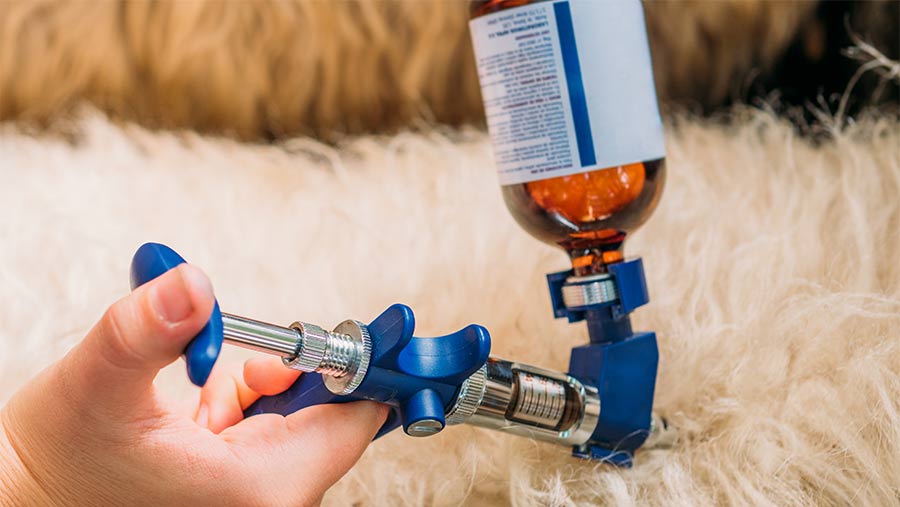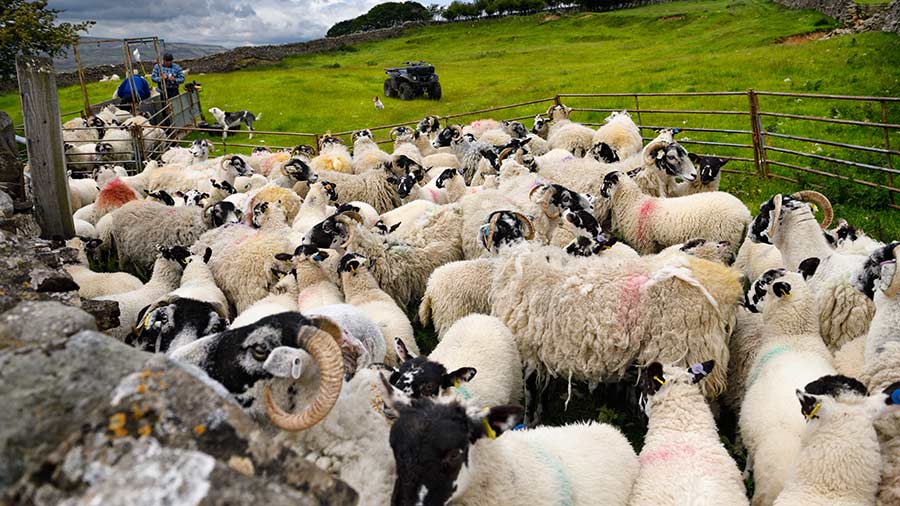Strategic plan could improve sheep vaccine availability
 © Addictive Stock/Adobe Stock
© Addictive Stock/Adobe Stock Vaccine supply disruption has frustrated beef and sheep farmers over the past two years, but things could be turning a corner.
Industry leaders have urged pharmaceutical companies and government to thrash out ideas to minimise future vaccine supply chaos on farms.
Key stakeholders and members of parliament will meet with the National Sheep Association (NSA) to produce a strategic UK plan to manage risk to vaccine availability.
See also: Enzootic abortion vaccine available again ‘just in time’
Farmers Weekly understands a continuing consultation process has been kicked off with an initial stakeholder meeting planned for 7 November.
This will come as welcome news to livestock farmers who have had to cope with key products being, at best, erratic in supply and, at worst, unavailable.
Nightmare
Several farmers have vented their frustrations at Farmers Weekly at being told to improve technical performance, lower costs, and reduce antimicrobials use when drugs companies are unable to supply them with the tools they need (See box).
Unseasonal supply of vaccines has particularly annoyed vets; for example, being offered orf vaccine in September, but not in spring, when it was needed.
One senior vet said sourcing vaccines had been a “chuffing nightmare” and “soul destroying” to treat illness with antibiotics that could have been prevented with a vaccine.
Despite this, results from the Responsible Use of Medicines in Agriculture (Ruma), which tracks antibiotics usage in UK livestock annually, showed all sectors were on target, and sheep farmers continued to make progress in 2022.
Vaccines use on the increase
- In 2021, 36.7 million doses of vaccine were sold to sheep businesses
- This is a 12% increase since 2012
- 63% of flocks were vaccinating for clostridia
- 51% of flocks were vaccinating for pasteurella
Source: National Sheep Association
What was in short supply?
Farmers Weekly asked vets and farm suppliers what vaccines were typically out of stock.
The products with availability issues included:
- Clostridial vaccines
- Clostridial combined with pasteurellosis vaccines
- Foot-rot vaccine
- Leptospirosis vaccines
- Toxoplasma and enzootic abortion vaccines
- Orf vaccine.
A spokesperson from Murray Farmcare, based in Dumfriesshire, said 2022 and 2023 had seen clostridial and pasteurellosis vaccines particularly disrupted.
“The ad hoc supply from the manufacturer has resulted in not enough vaccine being available, for example, in booster doses for lambs,” they added.
“On a number of occasions, the only option was to use a straight clostridial vaccine instead of a combined clostridial/pasteurella product.
“Enzovax, Toxovax and Leptavoid have been short, requiring use of antibiotics to compensate.
“Unavailability, at times, of appropriate pack sizes has led to oversupply and wastage that has legal, as well as commercial, implications.”
Why there was a shortage?
Addressing a National Sheep Association “breakfast club” webinar recently, Jonathan Statham, vet at Bishopton Vets in North Yorkshire and chairman of the Animal Health and Welfare Board in England, listed the following reasons why vaccine supply had been challenged in the past two years:
- Covid Unicef stockpiled half a billion syringes to administer future vaccines. This had a huge impact on inventory stock of material needed to produce vaccines – rubber stoppers, glass vials, excipients and raw ingredients. Animal and human health are linked
- Energy crisis Supply chain disruption has been exacerbated by travel and haulage costs as a result of sanctions imposed against Russia, which have hit Europe particularly hard
- Brexit Extra checks and paperwork have slowed the movement of vaccines into the country
- “Just-in-time” approach While this removes investment money tied up in stockpiles and wasted journeys, it removes contingency and spare supplies
- Strict regulation MSD stated that vaccine manufacture involves registering many different ingredients. These ingredients are highly regulated and cannot be swapped.

© Reimar/Adobe Stock
What is being done?
A spokesperson from the Veterinary Medicines Directorate said: “We are continuing to explore how resilience to the supply chains for veterinary vaccines can be improved in the longer term.
“We are working with the UK pharmaceutical industry and liaising with international veterinary medicine regulators to raise awareness of therapeutic gaps and to help increase the number and variety of veterinary medicines available.
“We understand that the current vaccine supply issues will be of concern for farmers and encourage them to speak with their vet about the best health management options for them.”
MSD Animal Health, reported to produce 80% of the sheep vaccines used in the UK, told Farmers Weekly the following:
- Demand for vaccines including Heptavac P Plus, Ovivac P Plus and Bravoxin Suspension remains high
- Although similar amounts of vaccines are being manufactured annually, customers will continue to experience supply disruption due to manufacturing and logistics challenges
- Updated knowledge exchange work will be provided to assist vaccination plans and help inform alternative approaches
- A dedicated project team is meeting regularly to review the flow of stock from our international manufacturing network into the UK.
What can farmers do?
- Get organised Plan how many doses you will need in each month (many clients roughly know this). Tally it up and send it to your vet or supplier
- Communicate Give your vets as much lead time as you can when trying to source vaccines. Tell them what you need, how much of it and when you will need it. Factor in the time needed to pick it up beforehand
- Commit Vaccines are seasonal, so you should know when you need them and have a rough idea of how many ewes and lambs you will be rearing during the year
- Be prepared to find an alternative For example, both live enzootic abortion vaccines ran out of stock. Some switched to an inactivated killed vaccine marketed in the UK. However, the availability of this product became limited as more businesses bought it. Vets can also look abroad. Some clostridial vaccine was imported from Hungary.
- Reduce infection pressure Without vaccines to rely on, stock management becomes more important. For example, if Footvax is unavailable, the culling of lame sheep and other points on the five-point lameness plan should be focused on rigorously.
Source: Joe Henry, Sheep Veterinary Society president and partner at Black Sheep Farm Health, Northumberland
Don’t waste progress
NSA chief executive Phil Stocker said it would be a huge shame to go backwards on vaccine use and antibiotics, but stressed that the recent Ruma report was very positive.
“If the industry has flatlined its antimicrobials use over the past year, it’s a huge positive given the challenges with vaccine supply,” he told Farmers Weekly.
He said big strides had been made across the industry to cut reduce oral dosing (Spectam), including lambing hygiene and greater focus on colostrum provision.
Some trends to lamb more sheep outside had also helped, and strong cull ewe prices and rising input costs in recent years had reduced flock sizes in some cases, which meant less disease pressure.
He reassured farmers that senior vets and the NSA were pushing government and pharmaceutical companies for a strategic, industry-wide plan to sure up future supplies.
